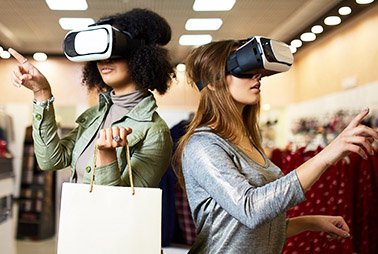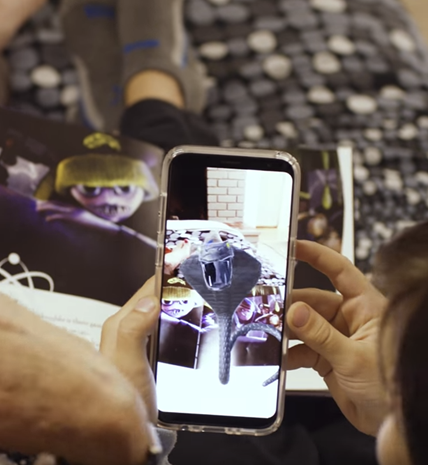Consumer Goods
Our mission is to help companies successfully implement
VR & AR hardware solutions.
Digitally transforming the Consumer Goods industry
The consumer goods sector is undergoing a massive transition as the next generation of consumers are leveraging digital reality experiences through various channels like e-commerce and mobile platforms. With high levels of potential profit at stake, Consumer goods players are rapidly embracing digital capabilities to establish consumer relevance in an industry that is highly cluttered and saturated. Augmented Reality, Virtual reality, Mixed reality, Game Development, and Animations are enabling the sector to powerfully engage with its customers and integrate simulation at the core of the business operations.
The simulation savvy consumer
Today, 34% of consumers are already using simulation in some form while shopping, and 47% of them use it both in a store and online shopping. These consumers are always on the lookout for instant attention-grabbing products, or products that stimulate emotion at a deeper level. Digital reality not only creates such memorable and immersive moments for the consumers but also strengthens their brand loyalty, incentivizes purchases, helps acquire new customers, ensures a higher conversion rate, transforms the shopper journey, and measures data.


Benefits of AR and VR in the Consumer Goods Industry
The industry is in a period of rapid change, and practical applications of Digital reality are meaningfully and organically impacting its popularity and market share. Augmented reality based digital catalogs allows the consumers to scan the products to reveal additional information about them. A 3-D visual image of the product in the user's physical environment acts as an effective way of giving information about products and comparing them, across many consumer goods industries. AR enhances product visualization when combined with a smartphone, thereby enabling the process of virtual trying before completing the purchase. A digital memory mirror allows users to try on different product options virtually and also to record this virtual look. The same application works in the beauty industry, which helps users to try on makeup virtually with the help of a smartphone front camera. Not only does this create an exciting interaction for the users, but it also allows brands to measure every single interaction. Additionally, AR is revolutionizing product packaging by creating informative and interactive packaging experiences, turning it into an always-on content channel. Through visualization, product information sharing, and product packaging, AR technology is creating a new sense of entertainment by engaging the customers, which boosts omnichannel shopping in the Consumer goods industry. On the other hand, Virtual reality is on the brink of eliminating the need for building and maintaining physical stores. Combining 3-D content libraries and virtual store models enables brands to create digital twins of stores in a virtual dimension, allowing users to be immersed in multiple scenarios using a VR headset. Navigation apps in the store and electronic shelf beacons are entirely changing the rules of the game. Moreover, gamification of the shopping experience is becoming a norm as it adds to the entertainment.
The way forward for the Consumer Goods Industry with XRTECHLINE
Hence the key to creating a digitally transformed consumer brand is by providing high-quality Simulation experience. Whether it's personalized marketing content or creating moments of engagement for the consumers, we at XRTECHLINE are consistently working to bridge the gap between the real and digital world for consumers who are at the epicenter of this industry. Through our innovations and out of the box solutions, we are unfolding the path for this transformation.